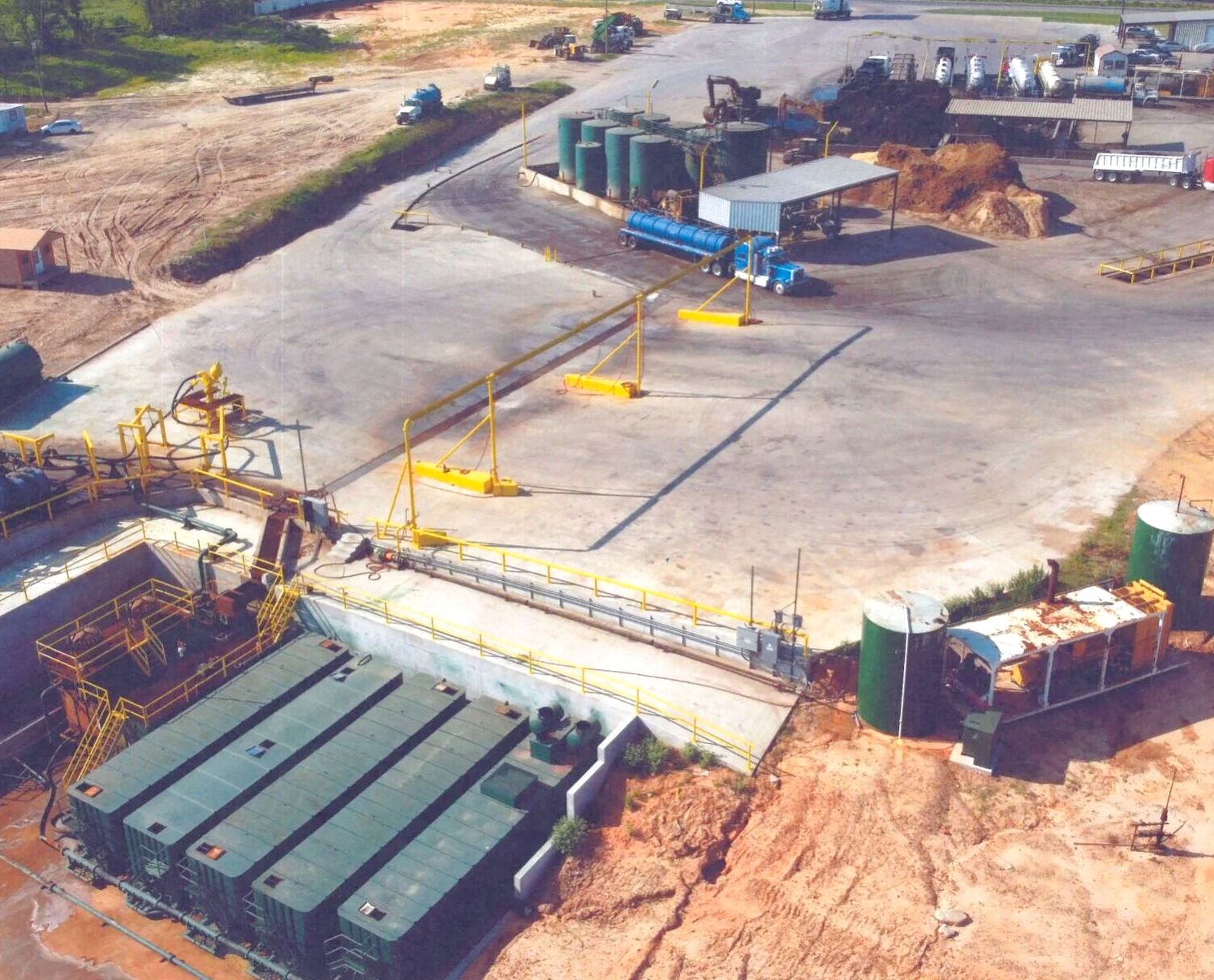East Texas residents sue Eastman, allege company ‘disregarded’ dangers of cancer-causing emissions
Published 10:50 pm Tuesday, July 22, 2025
A lawsuit has been filed in Marshall’s federal court against Eastman Chemical Co., alleging the company’s Harrison County plant has knowingly exposed residents to dangerous cancer-causing emissions.
The lawsuit was filed by plaintiffs Linda Dorsey, Doyle Dorsey, Jo Lee Ferguson, Kathryn McKinney, Raegan Muse, and Robert David Muse, Jr., who either live or work near the plant just outside Longview. Ferguson, McKinney, Linda Dorsey and Raegan Muse are breast cancer survivors.
The lawsuit claims Eastman has ignored the dangers of ethylene oxide – an odorless, colorless and carcinogenic gas released at the facility as part of its production process.
Trending
“Plaintiffs are innocent bystanders who lived, worked, and frequented businesses in close proximity to the industrial plant for years and were regularly exposed to EtO in the air they breathed each day,” the lawsuit states. “Although EtO has been classified as a human carcinogen for decades, Eastman disregarded EtO’s harmful properties and continued, and continues, to release EtO into the surrounding community — entirely unbeknownst to area residents and workers.”
Eastman has until Sept. 4 to file a response to the lawsuit.
The company’s Longview-area plant is one of 12 ethylene oxide production facilities in the U.S. The facility released 155,483 pounds of ethylene oxide between 2008 and 2018, making it the fourth-largest emitter in the country, according to Air Alliance Houston, a clean air advocacy group.
The plaintiffs cite Eastman’s self-reported EtO emissions to support their claims.
“Eastman’s self-reported EtO emissions from the industrial plant show Eastman has emitted high levels of EtO for decades. While most of these EtO emissions are from controlled sources, approximately half of these emissions are ‘fugitive emissions’ that have escaped, and continue to escape, the industrial plant,” the lawsuit states. “As a result, and unbeknownst to them, individuals living and working near the industrial plant face some of the highest cancer risks in the United States. These individuals, including plaintiffs, have been unknowingly inhaling EtO on a routine and continuous basis for decades.”
According to the lawsuit, although the plant self-reported that it released more than 565,000 pounds of EtO into the Longview-area community from 1987 to 2022, that doesn’t tell the entire story.
Trending
“According to the Texas Commission on Environmental Quality’s database, there have been numerous emission events in which the industrial plant released unauthorized EtO into the surrounding community,” the lawsuit states. “On December 10, 2003, Eastman reported pump rupture that led to an ‘estimated’ 300 pounds of EtO emitted; on October 4, 2006, Eastman reported a leak that led to 160 pounds of EtO emitted, again, based on ‘engineering best estimates’. Through just these few examples of reported emission events, Eastman has released more than 30,000 pounds of EtO in excess of its otherwise reported emissions.”
The plaintiffs allege the emissions have caused grave health concerns for workers and residents who live, work and attend school in the communities surrounding the plant.
According to research by global health organizations, adverse health effects identified from EtO exposure include various cancers, such as blood, lymphoid and breast cancers, the lawsuit states.
“In 1977, the National Institute of Occupational Safety and Health (‘NIOSH’) raised concerns that EtO may be a carcinogen and concluded that occupational exposure to EtO may increase the frequency of genetic mutations in humans,” the lawsuit states. “In 1981, NIOSH released a subsequent report and recommended that EtO be regarded as a potential occupational carcinogen. NIOSH based its recommendation on additional evidence of EtO’s carcinogenic, mutagenic, and reproductive hazards and studies showing an increased cancer risk.”
Additionally, plaintiffs noted the 1990 revision of the U.S. Clean Air Act included EtO as a hazardous air pollutant. Moreover, the International Agency for Research on Cancer along with the federal Department of Health and Human Service’s national toxicology program all recognized EtO as a known human carcinogen, the lawsuit states.
“The EPA has determined that EtO is carcinogenic to humans by the inhalation route of exposure,” according to the lawsuit. “Human exposure to EtO through inhalation significantly increases the risk of developing various forms of cancers, including breast cancer and cancers of the blood, including non-Hodgkin lymphoma, myeloma, and lymphocytic leukemia, and lymphoid.”
To further support lawsuit claims, the plaintiffs pointed to a 2023 order Eastman entered into with the Texas Commission on Environmental Quality because of a failure to prevent unauthorized emissions.
Plaintiffs in the lawsuit also said EPA’s compliance database shows, in the past five years, the Longview-area plant has had 12 fiscal quarters with “significant violations” of the Clean Air Act, and its compliance status with the EPA is listed as “high priority violation.”
Dorsey, who lived near the plant from 1973 to 2005, during the time Eastman reported it emitted more than 370,000 pounds of EtO, was diagnosed with breast cancer in 2017.
Ferguson, who has lived near the plant for more than 30 years, noted she was exposed to the chemical during the period Eastman reported it emitted more than 400,000 pounds of EtO.
“As a result of exposure to the EtO Eastman emitted, Mrs. Ferguson was first diagnosed with breast cancer in 2017. Mrs. Ferguson’s cancer returned as stage 4, metastatic, inoperable breast cancer in 2020,” the lawsuit states.
McKinney lived near the plant for 10 years from 2008 to 2018 and was diagnosed with breast cancer in 2018. During that time period, Eastman reported it emitted more than 137,000 pounds of EtO.
Muse lived near the plant for more than two decades, and during that time, Eastman reported emitting more than 260,000 pounds of EtO. She was diagnosed with breast cancer in 2016 and had a recurrence in 2022.
“Plaintiffs consistently, and without any knowledge, inhaled toxic levels of EtO in and around their homes, their places of work, and in Longview generally,” the lawsuit states. “At the time of their diagnoses, plaintiffs were neither on notice nor aware that they had been inhaling toxic levels of EtO for years.”
Plaintiffs allege Eastman was negligent in its actions.
“Eastman had a duty to exercise reasonable care in the operation of the industrial plant, including testing of EtO emissions, mitigation of EtO emissions, manufacture and use of EtO, and emission of EtO, including a duty to ensure that its manufacture of EtO would not cause those exposed to it to suffer unreasonably dangerous side effects,” the lawsuit states. “Eastman failed to exercise reasonable care in the testing of EtO emissions, mitigation of EtO emissions, manufacture and use of EtO, and emissions of EtO in that Eastman knew or should have known that its EtO emissions would result in exposures to EtO by innocent bystanders, resulting in a high risk of unreasonably dangerous side effects, including, but not limited to, cancer.”
In addition to emitting dangerous and/or excessive amounts of EtO from the industrial plant, the lawsuit alleges Eastman’s plant also was negligent by failing to adopt, implement and/or enforce reasonable and sufficient measures to mitigate and/or reduce emissions of EtO from the industrial plant to potentially non-harmful levels; failing to adequately track, record, and/or monitor the amounts or levels of emissions of EtO; failing to adequately track, record, and/or monitor the amount of EtO present in the air surrounding the industrial plant; failing to adequately, accurately, and thoroughly report the levels of EtO being emitted from the Industrial plant; failing to select and utilize safer, alternative methods to produce EtO at the industrial plant; and allegedly concealing from the public the nature and extent of EtO emissions from the industrial plant.
The lawsuit further claims that Eastman failed to warn people who live and work in the surrounding community of the EtO exposure.
“Eastman knew or should have known members of the public, including plaintiffs, would foreseeably suffer injury as a result of Eastman’s failure to exercise reasonable care,” the lawsuit states. “As a direct and proximate result of the aforementioned negligence, plaintiffs suffered injuries that are permanent and lasting in nature, including physical disability, mental anguish, diminished enjoyment of life, and loss of income, as well as financial expenses for hospitalization and medical care.
“Eastman had a duty to maintain the purity of the air resources consistent with protecting health, general welfare, and physical property of the people,” the plaintiffs contend. “Plaintiffs’ cancer diagnoses are an injury that the statutes were designed to prevent by limiting individual’s exposure to pollutants. As a proximate result of the wrongful and tortious acts of Eastman as alleged herein, each plaintiff’s health was adversely impacted by the devastating effects of cancer and its corresponding treatment. Eastman’s wrongful conduct as alleged herein was the proximate cause of plaintiffs’ damages and has caused plaintiffs to incur damages in an amount to be proven at trial.”
The plaintiffs are seeking a judgment awarding restitution and/or other equitable relief, including, without limitation, restitutionary disgorgement of all profits and unjust enrichment that defendant obtained from plaintiffs as a result of the unlawful, unfair and/or fraudulent business practices.
Plaintiffs are also seeking a judgment awarding damages under common law and/or by statute, and punitive damages; compensatory damages; general damages; actual loss of earnings; punitive damages in an amount sufficient to punish Eastman and deter future similar wrongdoing; and a judgment awarding plaintiffs their costs of suit, including reasonable attorneys’ fees as permitted by statute or law, and pre- and post-judgment interest.







